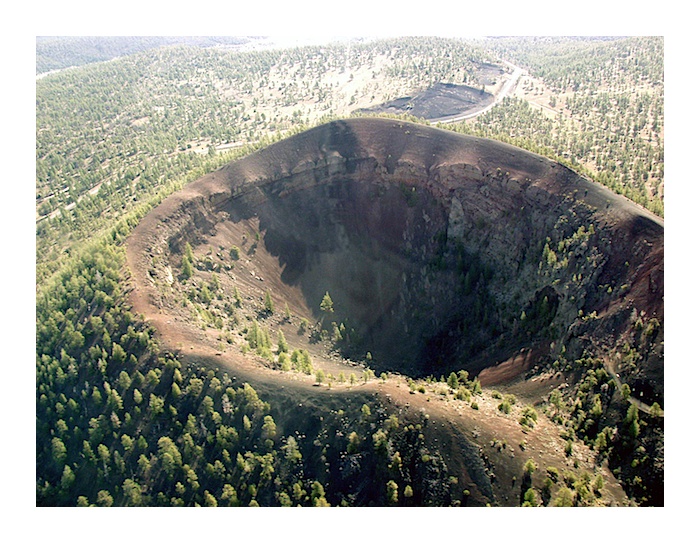The Museum is currently closed for renovations. Updates on the renovation will be available here and on the Museum's social media pages. More information about the project is available HERE.
You are here
The Volcanoes of New Mexico
Volcanoes and volcanic landforms are abundant, well-exposed, and un-eroded in New Mexico, so there are many opportunities to use New Mexico examples for understanding physical volcanology characteristics. And one of the great rift valleys of Earth, the Rio Grande rift, also cuts through the middle of New Mexico. Both features have played an important role in shaping both the landscape and the unique culture of the New Mexico that we know today.
Below is a map showing the distribution of the volcanic areas on a digital elevation model of the state. Click on a volcano icon to learn more about each one.
 New Mexico Volcano Collection
New Mexico Volcano Collection 
New Mexico Volcano Directory
A map of volcanoes and volcanic features around the state, with detailed discussion of each site.
New Mexico: Land of Volcanoes
Facts and discussion about New Mexico volcanoes. Download posters showcasing the volcanic features of the state.
A Quick Look at Some Important Volcanoes and Volcanic Areas of New Mexico
Below is a brief overview of the top recommended places for beginning volcanologists to explore New Mexico's volcanic past…and imagine its future. For more volcanoes in New Mexico, visit the links above.
Capulin Volcano National Monument
(33 miles east of Raton). With a paved road to the summit crater, a rim trails and a trail to the bottom of the crater, this is one of the most accessible volcanoes in the country.
El Malpais National Monument and Zuni Bandera Volcanic Field
(72 miles west of Albuquerque). This is "Hawaii in the desert Southwest" and gives visitors an opportunity to see primary lava flow structures. Many terms used to descibe fresh lava flows were originally defined from studies in this area.
Petroglyph National Monument
(Albuquerque’s west side). The petroglyphs were etched on lava flows that erupted from a classic fissure eruption. This site includes both unusual small-scale volcanic features and some typical examples of the interior of lava flows.
Rio Puerco Volcanic Necks
(30 miles west of Bernalillo). This offers visitors one of the best views in the world of the near-surface interiors of small volcanoes. And the setting is classic Southwest, with buttes and mesas.
Valles Caldera
(40 miles west-northwest of Santa Fe). This is a monument to New Mexico’s undiscovered potential. Quite simply, from the perspective of morphology, the Valles Caldera is a better example of a supervolcano than Yellowstone. It is the "poster-child" for large calderas.
Valley of Fires State Recreation Area
(3 miles west of Carrizozo). One of the longest young lava flows in the world, with features often seen in textbook examples of young lava flows.
Zuni Salt Lake Crater
(County Road 601 between Fence Lake and Quemado). This classic young volcanic crater formed explosively when hot magma encountered ground water. It is one of dozens of explosive craters, called "maars" by geologists, occurring throughout New Mexico.
Further reading
Guide to New Mexico Volcanoes for the Non-geologist
(2001 article by L. S. Crumpler and J. C. Aubele) [1.1MB PDF]



